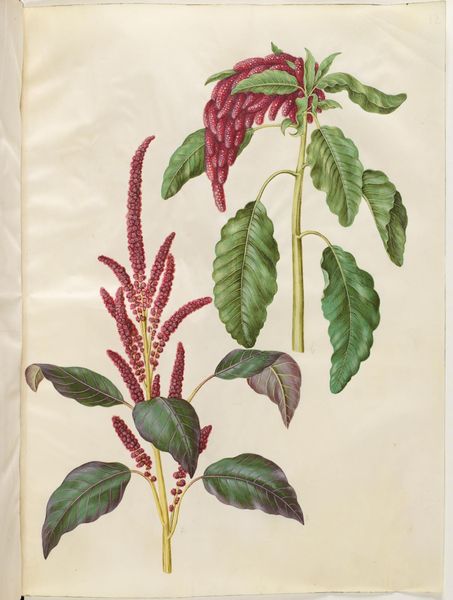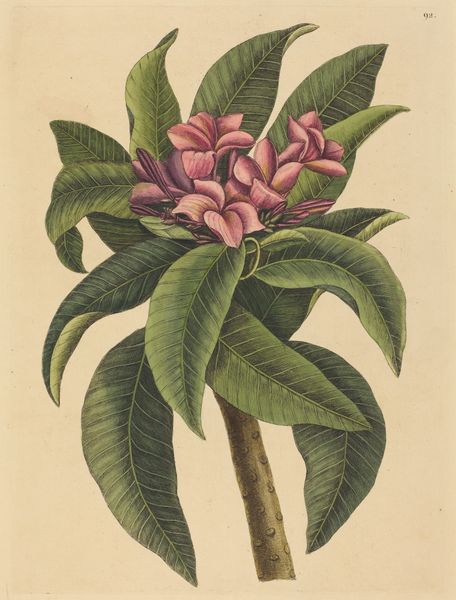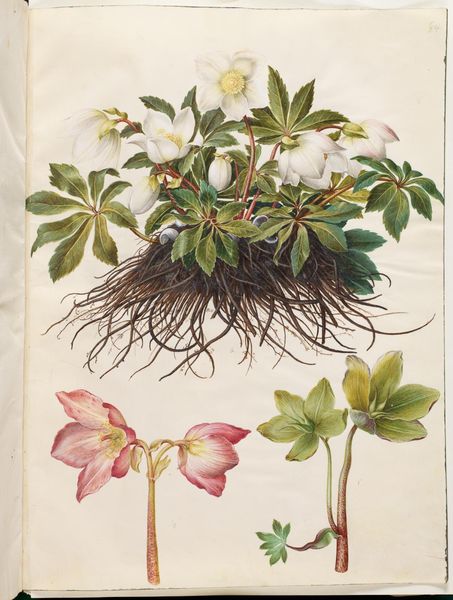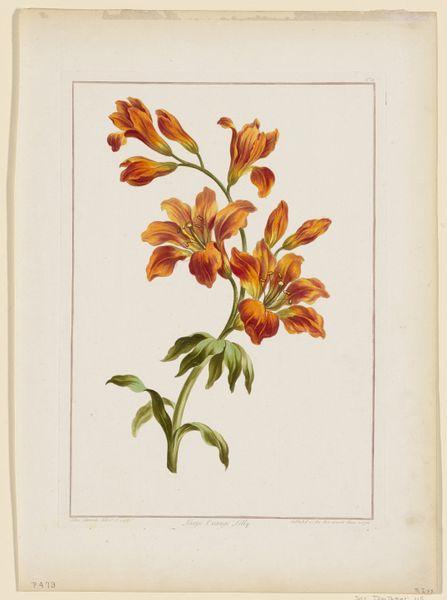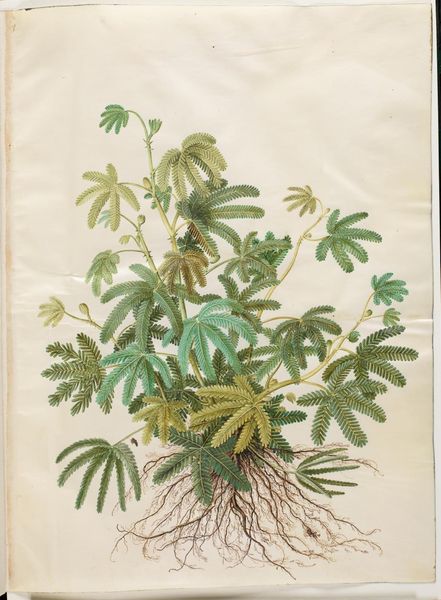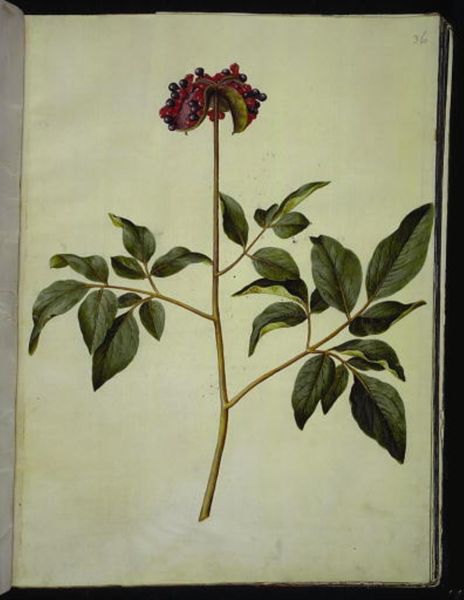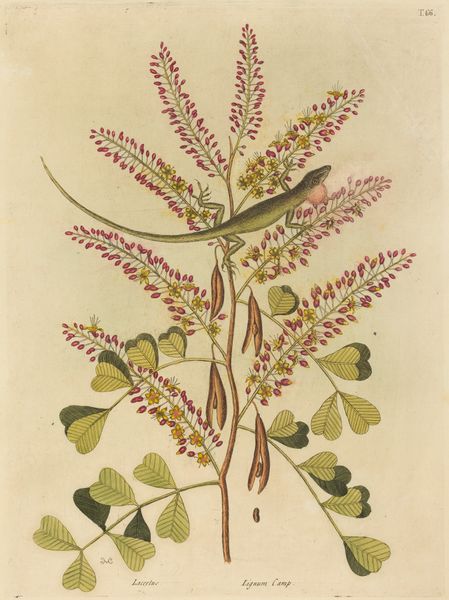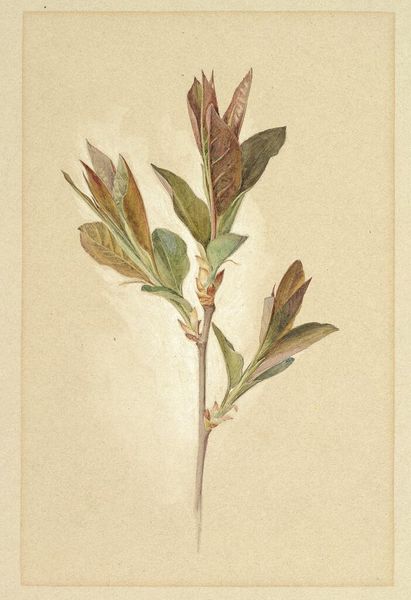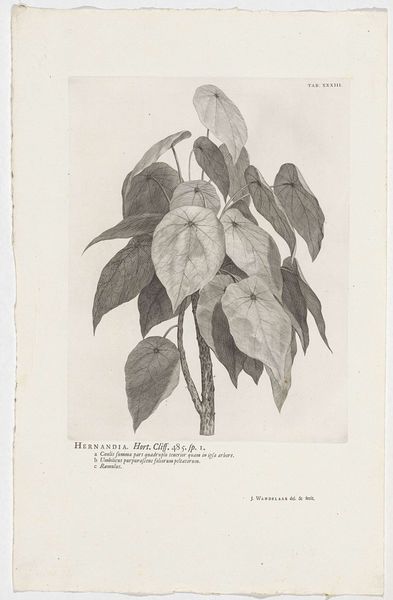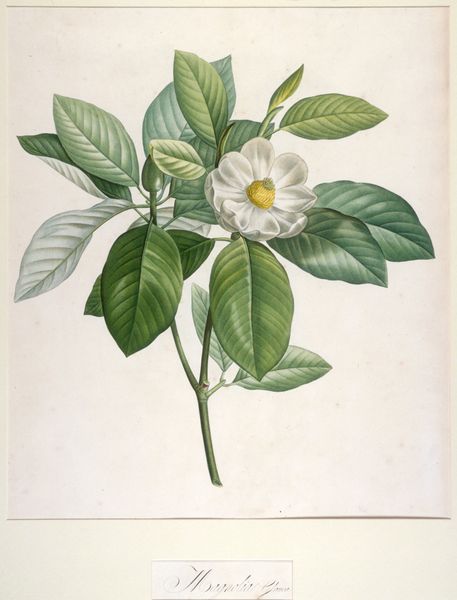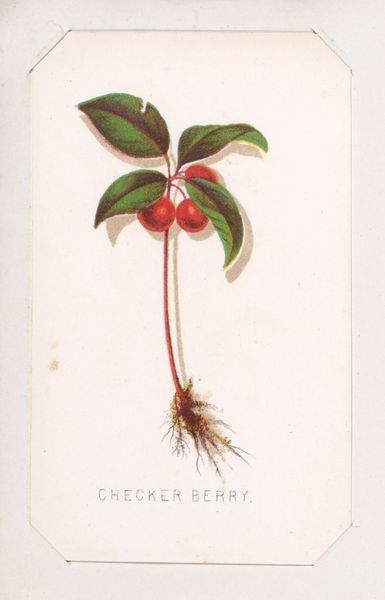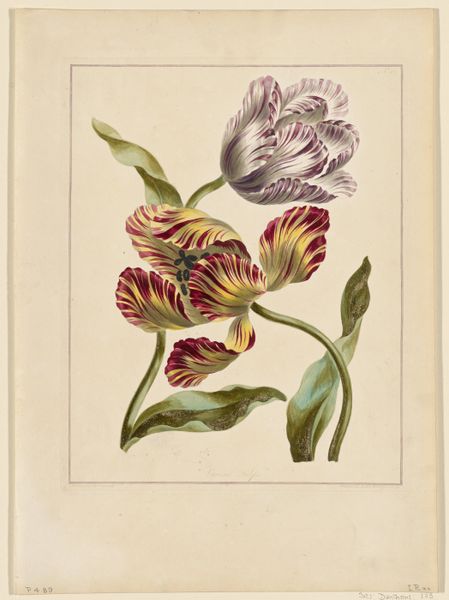
drawing, gouache, watercolor
#
drawing
#
gouache
#
watercolor
#
watercolour illustration
#
northern-renaissance
#
watercolor
#
realism
Dimensions: 505 mm (height) x 385 mm (width) (bladmaal)
Hans Simon Holtzbecker, around the mid-17th century, meticulously rendered ‘Amaranthus tricolor’ in watercolor and gouache on vellum. The choice of vellum itself speaks to a tradition of luxury and permanence, far removed from the disposable culture of today. But let’s consider the labor involved: Holtzbecker’s precise brushstrokes capture the plant’s vibrant colors and intricate details. The plant's textures are carefully rendered, almost like a three-dimensional object. This wasn’t just a quick sketch; it was a deep, sustained engagement with the subject. This level of attention to detail elevates the botanical illustration beyond mere documentation. It reflects a period of scientific exploration but also speaks to the relationship between art, science, and commerce during the Renaissance. These detailed artworks reflect the value placed on natural specimens and their role in expanding knowledge and trade. Looking at this image, it reminds us that even the most seemingly straightforward images are imbued with a complex web of materials, processes, and social context.
Comments
No comments
Be the first to comment and join the conversation on the ultimate creative platform.
